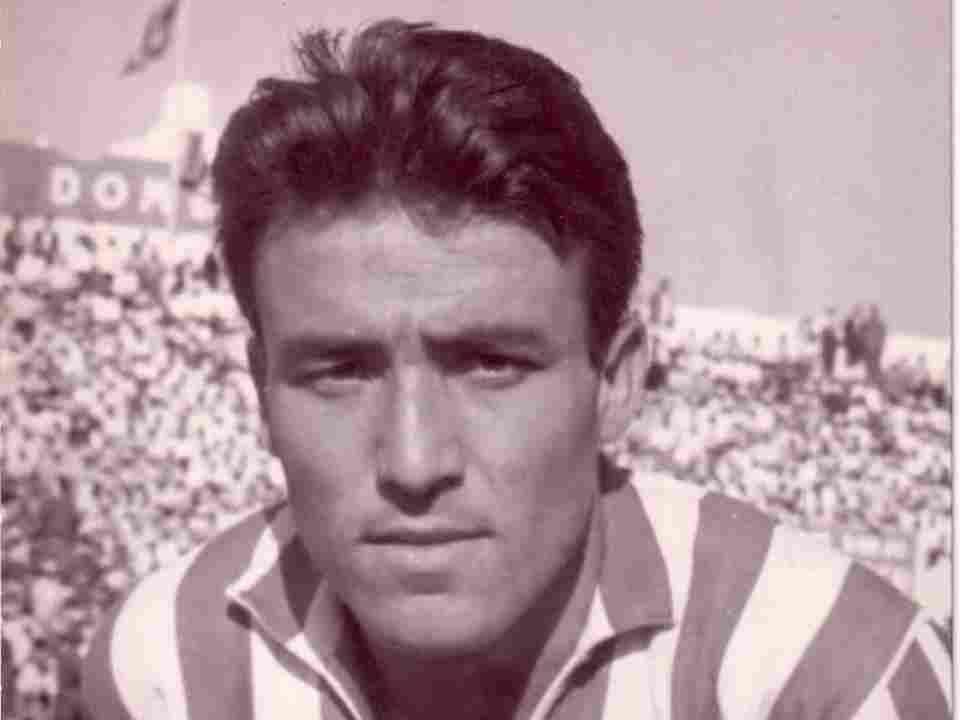
Profile: Luis del Sol
The first Green and White superstar
Luis del Sol is regarded as the greatest Green and White player of all time. A myth that has represented, more than anyone else, the universality of Real Betis Balompié. His name has been worshipped by many generations.
He was born in Arcos de Jalón (Soria, Spain) on the 6th of April of 1935, but his family moved soon afterwards and settled in the Seville's neighbourhood of San Jerónimo. He began to play football there, and when he was 16, he signed for Real Betis U18 team. He soon outstood and, for this reason, after a loan in Utrera, he became a Real Betis first team member when he had just turned 19.
His debut with the senior Green and White team occurred on the 17th of October of 1054 in Badajoz while Betis were playing in Second Division. Coach Francisco Gómez, one of the the 1935 League winners, have him a chance, and these starting eleven became part of Real Betis history: González, Portu, Barinaga, Cifuentes, Óscar, Aumesquet, Del Sol, Guerrero, Cabrera, Hurtado, Flores.
In May of 1955, Benito Villamarín became Betis president and his name will be linked forever to Del Sol's. Both have been later considered as the symbols of the Club's regeneration and, especially, the foundation that took the team back to the top division. An achievement that concluded on the 1st of June of 1958, with the victory at Heliópolis over Jerez, although the promotion had been achieved a week before with a goal from Del Sol.
During his first years, Del Sol used to play as a winger, but at the point mentioned before, he had freedom to move all over the pitch and soon became a powerful and fast midfielder that controlled the game. He was also the team's captain.
With Betis then in the top division, Luis del Sol was the skipper in the derby played at Nervión that ended with a Green and White victory (2-4) and scored the first official goal ever scored in the recently opened Ramón Sánchez Pizjuán.
He immediately became one of the big names in Spanish football, and his quality and strength drew the attention of the most important clubs in the continent. In 1960, the 2nd of April to be more precise, his transfer to Real Madrid was announced, in exchange for six and a half million Pesetas (around 40,000 Euros) and three Real Madrid players: Martín Esperanza, Lloréns and Pallarés.
With Real Madrid, Luis del Sol won one Champions League, one Intercontinental Cup, two leagues and one Cup of Spain. He also made his debut with the Spanish national senior team. During his time at Betis he only played for the second national team.
His debut took place on the 15th of May of 1960 at Santiago Bernabéu Stadium against England and, in total, he wore the national shirt 16 times and played two World Cups (Chile 1962 and England 1966) and one Euros (1964).
Contemporary to many other important players in the history of Spanish and world football (Si Stéfano, Puskas, Gento, Kubala), Del Sol is regarded as one of the best national players of all time.
He gained status as one of the main players in European football, and in 1962 he was tansferred from Real Madrid to Juventus for the important amount of 35 million Pesetas.
In the powerful Italian club, the might 'vecchia signora', Luis del Sol won one Scudetto and one Coppa Italia. He soon became a legend there, wearing the skipper armband for several years, and receiving the nickname 'settepulmoni' (seven lungs) due to his extraordinary physical strength and his generosity on the playing field.
Years later, in 2012, he was included in the hall of fame in the new Juventus Stadium after being chosen by the bianconeri fans as one of the 50 most important players in the club's history.
In 1970, he was transferred to AS Roma and, in 1972, he deiced to return home, to Real Betis, where he played for another season. His second debut happened on the 2nd of October of 1972 at El Molinón against Sporting de Gijon.
The season did not end well and Betis got relegated to Second Division, which led to Luis del Sol's retirement, aged 38.
In the seven seasons Del Sol wore the Green and White shirt, he played 190 official matches (169 league, 11 Cup and 10 promotion) and scored 45 goals.
In 1981, he made his debut as coach and in 1986 took charge of Real Betis second team, but he was son called up to the first team.
He sat on the bench for the first time at San Mamés in May 1986 and was at the helm until the end of following season.
Years later, he became the Club's sporting director, but once again called to be the head coach for the final games of the 2001/2002 season. And he was again fundamental for the return of the team to the top division that same year.
A great amongst greats. Probably, still the biggest Green and White legend.





